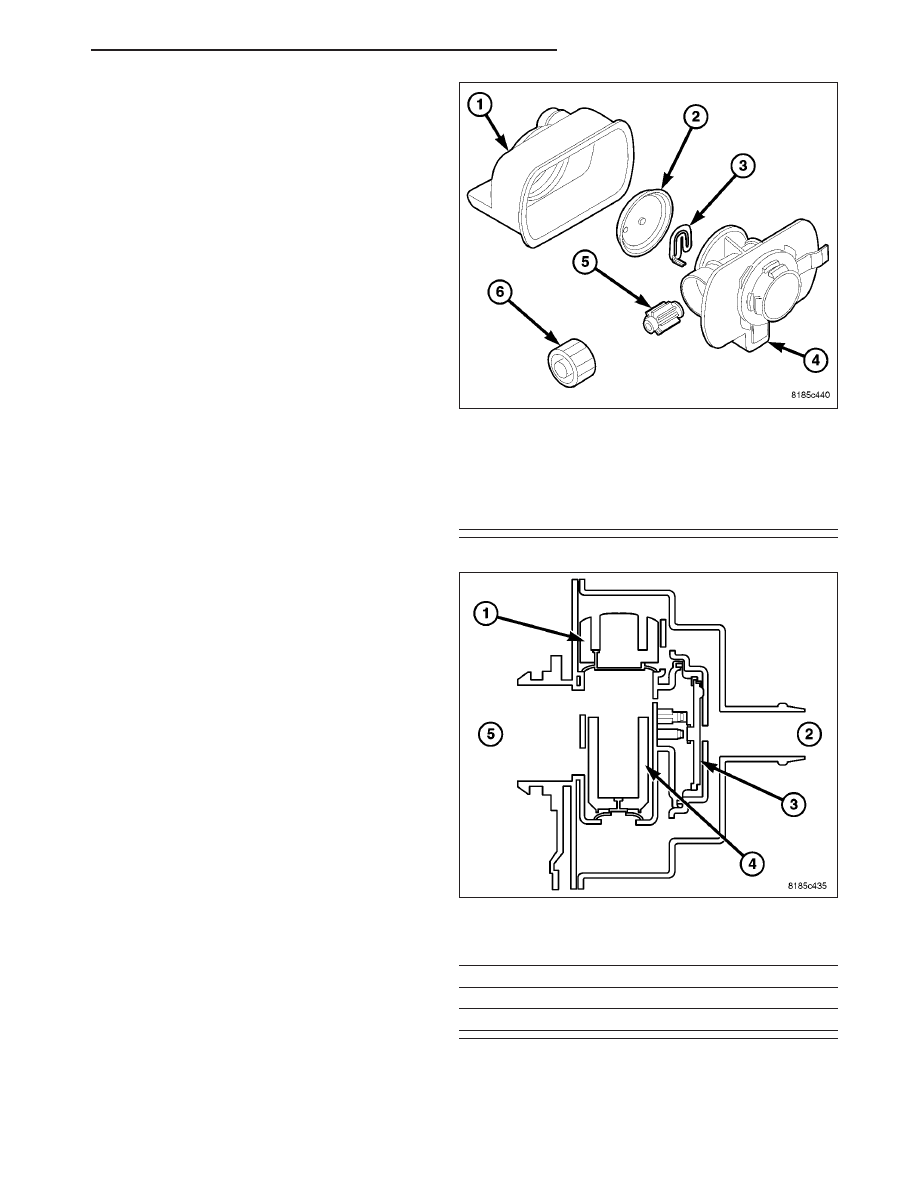Dodge Caliber. Manual - part 1446

The ESIM assembly consists of a housing, a small
weight and a large weight that serve as check valves,
a diaphragm, a switch and a cover. There is one large
weight and one small weight check valve in the ESIM
assembly. A seal is attached at the end of each
weighted check valve. The large weight check valve
seals for pressure. The small weight check valve seals
for vacuum. The weighted check valves are contained
within the ESIM housing.
The ESIM (Evaporative System Integrity Monitor),
while physically different than the NVLD system, per-
forms the same basic function as the NVLD does –
controlling evaporative emissions. The ESIM has been
simplified because the solenoid used on the NVLD is
not used on the ESIM.
The ESIM consists of housing, two check valves
(sometimes referred to as weights), a diaphragm, a
switch and a cover. The larger check valve seals for
pressure and the smaller one seals for vacuum.
During refueling, pressure is built up in the evapora-
tive system. When pressure reaches approximately .5
inches of water, the large check valve unseats and
pressure vents to the fresh air filter.
Conversely, when the system cools and the resulting
vacuum lifts the small check valve from its seat and
allows fresh air to enter the system and relieve the
vacuum condition. When a calibrated amount of vac-
uum is achieved in the evaporative system, the dia-
phragm is pulled inward, pushing on the spring and
closing the contacts.
The ESIM conducts test on the evaporative system as
follows: An engine off, non-intrusive test for small
leaks and an engine running, intrusive test for medi-
um/large leaks.
The ESIM weights seal the evap. system during
engine off conditions. If the evap. system is sealed, it will be pulled into a vacuum, either due to the cool down from
operating temperature or diurnal ambient temperature cycling. When the vacuum in the system exceeds about 1”
H20, the vacuum switch closes. The switch closure sends a signal to the GPEC1. In order to pass the non-intrusive
small leak test, the ESIM switch must close within a calculated amount of time and within a specified amount of
key-off events.
EXPLODED VIEW
1 - ESIM Housing
2 - Diaphragm
3 - Switch
4 - Cover
5 - Small Check Valve
6 - Large Check Valve
CUT AWAY OF MODULE
1 - Large Check Valve
2 - Fresh Air Inlet
3 - Diagram
4 - Small Check Valve
5 - Vapor Canister
PM
EVAPORATIVE EMISSIONS
25 - 29